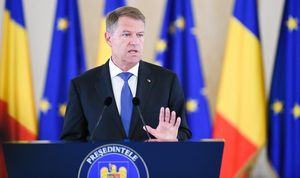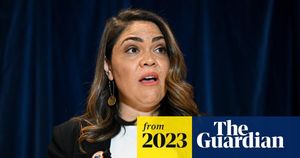Urasoe City, located within Okinawa Prefecture, marked its latest mayoral election with incumbent Tetsuharu Matsumoto achieving re-election and setting the tone for local governance amid pressing issues surrounding military relocations. The election, conducted on the 9th of the month, witnessed voter turnout dropping to 50.73%, the lowest ever recorded for this political contest.
Matsumoto, 57, who ran as an independent candidate but garnered backing from the Liberal Democratic Party and Komeito, faced Akimi Satomichi, 67, also running as an independent and advocating for environmental conservation. The relocation of the U.S. military's Naha port facilities to Urasoe's west coast emerged as the central subject of contention during the campaign.
After being declared the victor, Matsumoto stated, "It's a difficult path, but I have found ways to get the citizens to understand my approval of the transfer," reflecting his acceptance of the military relocation plan and commitment to managing its consequences closely with the community. Meanwhile, Satomichi expressed disappointment stating, "I campaigned vigorously for environmental protection, but it was not enough," emphasizing the challenge faced by newcomers against well-established incumbents.
Electoral engagement has witnessed diminishing numbers, as previous elections had seen higher turnout rates, such as 62.95% during the last mayoral ballot. The decline of over 12.25 percentage points signifies not just voter apathy but could also indicate confusion or dissatisfaction among the electorate concerning available choices and issues at stake.
The backdrop to the election revolved around the contentious discussions about the relocation of military infrastructure from Naha's existing facilities, with the Japanese government planning to transfer operations to Urasoe's west coast. This strategy, backed by Matsumoto, was seen as pivotal for local employment and economic development, albeit with environmental risks raised by opponents like Satomichi.
The political dynamics surrounding the election were distinctly shaped by the broader trends observable across Okinawa Prefecture. The so-called "All Okinawa" coalition, supporting Governor Denny Tamaki, failed to rally viable candidates who could present unified opposition to the incumbent. According to representatives of the coalition, "We did not find candidates who could unite under the 'All Okinawa' banner this time," illustrating the challenges the coalition faces as it navigates local politics and community sentiments.
Matsumoto's win potentially offers some leeway for the ruling party; the general optimism suggests this victory aids their ambitions to regain seats and influence during the upcoming summer elections. The re-election holds significance particularly as it reflects public sentiment amid rising political pressures surrounding military presence and local governance.
Looking forward, Matsumoto has committed to transparency and continuous communication with the electorate about the military transfer, vowing to tackle the challenges associated with it, preserving the interests of Urasoe's residents. His ability to balance military matters with community welfare might not only govern future municipal policy but also impact public trust and civic engagement levels.
The Urasoe City mayoral election results open debates about military relocation and local governance yet again, with Matsumoto's administration having the potential to set precedents for engagement with both military and civilian interests. With continued scrutiny from various factions within the city and across Okinawa, the efficacy of Matsumoto's governance will come under heightened observation as the local council navigates through these complex and often contentious waters.



